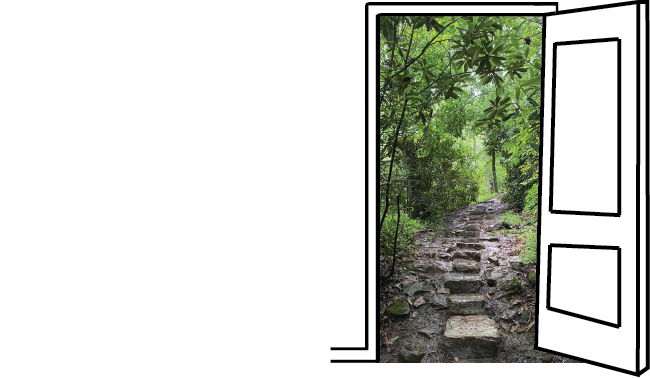Butterfly Beauty +
Butterfly wings are both beautiful and functional!
Butterflies have thousands of protective scales all over their wings. If you have ever touched a butterfly’s wing you may have felt something that feels like dust on your fingers- those were scales! For this reason, please DO NOT touch butterflies’ wings. The scales are very tiny, but VERY important. The butterfly’s scales help it fly and give it the beautiful colors you see.
COLOR
The coloring of a butterfly is an important adaptation to keep it safe and help it find a mate. The bright colors of a butterfly are used as a signal to inform predators they are bad tasting and sometimes even poisonous to eat! For example, Monarch Butterflies are poisonous because they eat milkweed plants which contain poison toxins, so if a predator ate a Monarch Butterfly it would likely get sick and vomit. Other butterflies use mimicry to mimic the bright colors of Monarch Butterflies so predators will avoid eating it.
PATTERN
Look closely at the coloring of a butterfly and you will notice some interesting things. Butterfly wings are symmetrical and have patterns on their wings to aid in survival. Some wing patterns help butterflies blend into their environment by looking like bark or leaves (and sometimes even bird poop!). Other wing patterns have “eye spots” to trick predators into thinking it’s a larger animal like an owl! Iridescence (shiny rainbow changing color effect) on certain butterfly wings creates little flashes of light when the butterfly is flying which confuses predators.
There have been recent studies in the butterfly world that reveal that butterfly wings are actually living structures. Scientists used infrared cameras to look at the butterfly wing structure and found that wings release more heat than their surrounding area to help moderate the butterfly’s temperature. This is leading to some interesting discussion on how this can help the engineering community create micro-structures to control light and heat, and help build better airplanes too! Have older children further research butterfly wings and think of ways butterfly wings can better some man-made structures. This can lead into very interesting bio-mimicry projects!
Exploring Butterfly Patterns
Practice making symmetrical patterns using natural items. Begin with a blank butterfly canvas (made out of paper, felt, etc.) and create a design on half of the butterfly using natural materials you collect. Your children can then go out and find the proper materials to create the other symmetrical wing. Get a little tricky with certain shapes (like the Y stick) and ensure the child creates the mirror image of the shape on their half of the butterfly. Creating symmetrical patterns is wonderful brain training for young kids.
Getting Artsy with Butterflies!
Use plain white paper or fabric to cut out a butterfly. Then collect flower petals (or other natural items that would have a similar result- small berries, certain leaves, etc.) and arrange them on one wing. Next fold the butterfly in half and carefully use a mallet to hammer the butterfly on a hard surface. Finally, open up your butterfly and see the wing pattern you artfully smashed! This activity can help children with spatial awareness, fine motor skills (folding and hammering), and visualizing symmetry as a mirror image.





